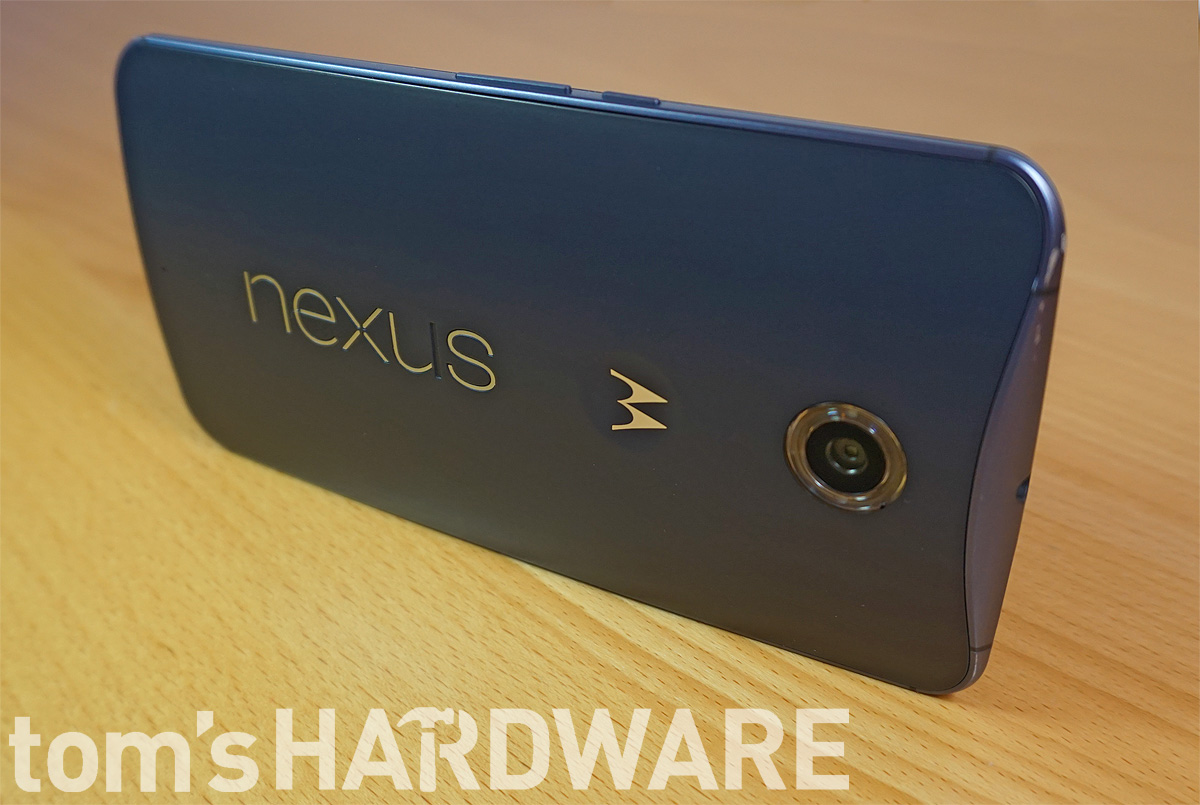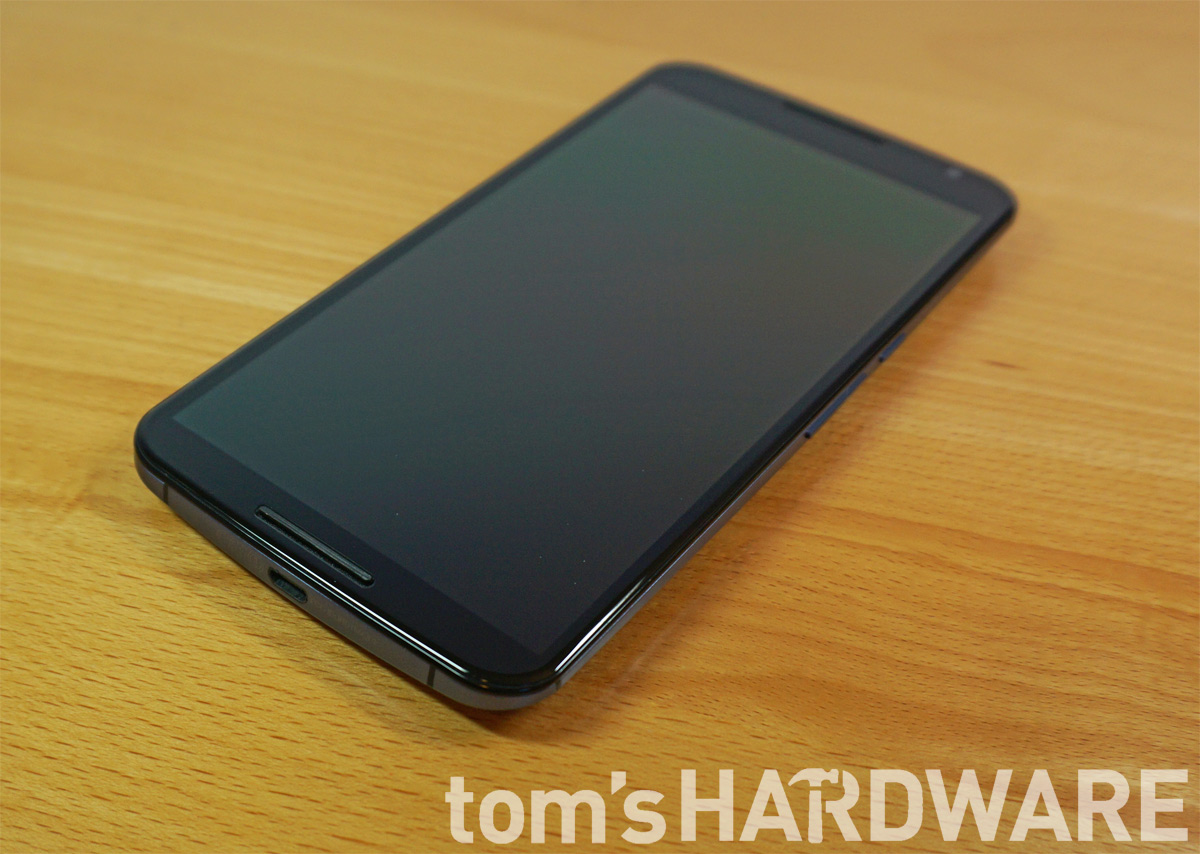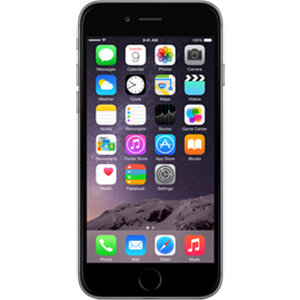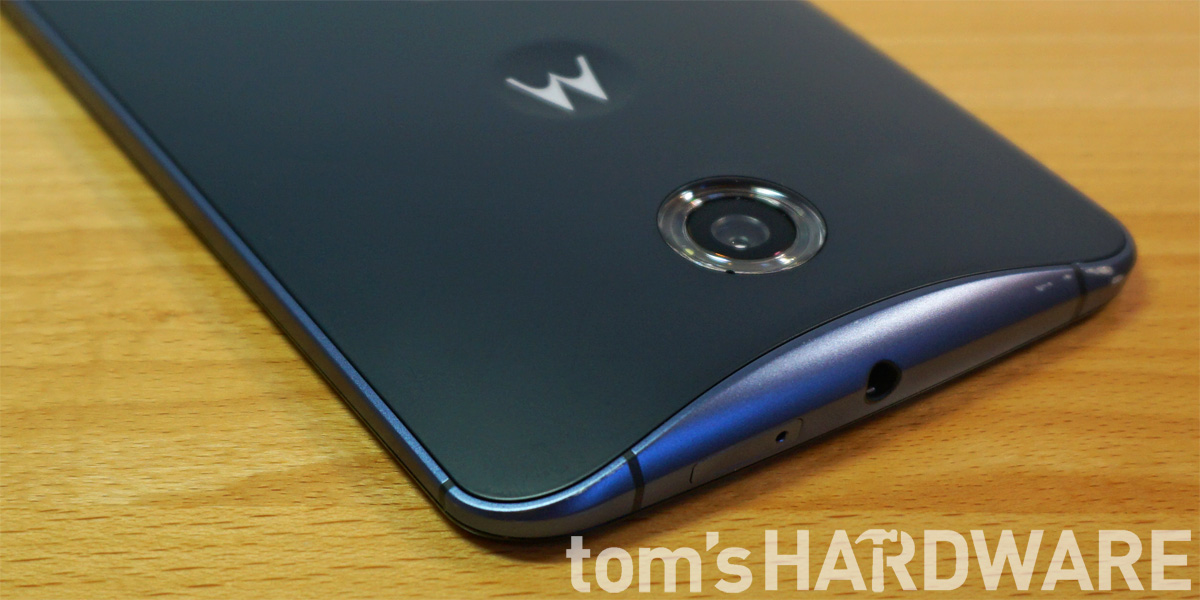Early Verdict
A high price brings high expectations, which the Nexus 6 fails to meet. If you need a large screen and don’t mind waiting for OS updates, there’s phones with better hardware and software available in this price range.
Pros
- +
Excellent Audio • Solidly Built • Speedy Performance • Timely Android Updates
Cons
- -
Poor Display Quality • Mediocre Camera (OIS MIA) • No Expandable Storage
Why you can trust Tom's Hardware
The Bigger The Better?
A “nexus” is a point (or series of points) that links multiple things. It’s a great name for a smartphone line, alluding to this one device linking you to, well, anything you like. In that regard, little has changed in the five years that Google has been cranking out Nexus designs through its OEM partners. The design intent that started with HTC, progressed through Samsung and LG, and now lands on Motorola remains consistent: create the best device to showcase Android's latest features. Whether any of the six models to date have, in fact, been the best remains open for debate, but there’s no getting around the fact that the Nexus 6 is a fine bit of pocket paraphernalia.
Of course, the Nexus 6 now forces us to ask: will it fit in your pocket? The Nexus One measured 119.0 x 59.8mm, while the Nexus 6 stretches to 159.3 x 83.0mm—a footprint increase of over 85 percent. On a hip holster, this is starting to look less like a communication device and more like body armor. Are we complaining? Yes and no.
Remember when, once upon a time, back in the RAZRlithic Epoch, the drive was on to make phones as small as possible? Some prototypes in Asia were little more than two credit cards hinged together. We liked that. Small tech fades more easily into the background, leaving people free to be plain old humans in the foreground. That’s old school. It also reflects a time when voice communication was the killer app for phones.
The introduction of touchscreens, along with higher data rates and faster processors, reversed this trend. Today, large screens are the norm, and the Nexus 6 is no exception, pushing the brand into phablet territory, a class of device that sits at the, well, nexus of phone and tablet. People want the form factor convenience of a phone but the larger screen benefits of a tablet. More glass is better for consuming entertainment, reading everything from websites to Kindle ebooks and being more productive with apps thanks to greater visibility of data and (in some cases) having the ability to incorporate stylus-written input. Consider the resolution evolution in the Nexus line. The Nexus One gave us 480x800 at 254 ppi and the Nexus 6 delivers 1440x2560 at 493 ppi. That’s a lot more data on the screen displayed with much finer detail. Even small text and graphics remain sharp and viewable.
Back when we reviewed the LG G3, we wondered if it would become the basis for the Nexus 6. While the two certainly compete for that same premium end of the phone market, Google instead opted to let Motorola craft the Nexus 6 as a super-sized Moto X. You get the same build quality and svelte, curved back, but designers dispensed with the funky back panel substances and instead one-upped each of the phone’s critical components.
Technical Specifications
Internal hardware is similar to the Samsung Galaxy Note 4. Both are powered by a Snapdragon 805 SoC with 3GB of RAM, have at least 32GB of internal storage and support 802.11ac MIMO Wi-Fi and Cat. 4 LTE. The 805 should deliver excellent performance. However, 64-bit support is one of the new features in Android 5.0, so it's unfortunate that a 64-bit CPU didn't materialize in time to allow the Nexus 6 to be Android's 64-bit launch vehicle.
There’s not much Motorola could do with the Nexus 6’s power source while still keeping size and weight down. Nevertheless, the phone does feature a 3220 mAh battery. This compares favorably to the LG G3’s and G Flex 2's 3000 mAh batteries and matches the unit in the Samsung Galaxy Note 4. While it does support Qi wireless recharging, the Nexus 6’s battery is not removable, a shortcoming not shared by the G3 or Note 4.
Get Tom's Hardware's best news and in-depth reviews, straight to your inbox.
The Nexus 6's rear camera uses a Sony IMX 214 13MP sensor (the same as the OnePlus One), which is a nice bump in pixel count compared to the Nexus 5. The updated sensor uses smaller pixels, however, reducing the amount of light received per pixel and hurting low-light performance. The Nexus 6 does move to a f/2.0 aperture, which lets in more light, and adds optical image stabilization (OIS), both of which could offset the smaller pixel penalty. The front camera also receives a small increase in pixels, but is still a fairly standard 2MP.
Cellular
| Model Number | XT1103(North America) | XT1100(International) |
|---|---|---|
| Baseband | Qualcomm MDM9625M | Qualcomm MDM9225M |
| RF Transceiver | Qualcomm WTR1625L + WFR1620 | |
| RF ICs | Qualcomm QFE1100 (envelope tracker) + RF Micro Devices RF7389EU | |
| LTE | 2/3/4/5/7/12/13/17/25/26/29/41 | 1/3/5/7/8/9/19/20/28/41 |
| GSM | 850/900/1800/1900 MHz | 850/900/1800/1900 MHz |
| CDMA2000 | 0/1/10 | N/A |
| WCDMA | 1/2/4/5/8 | 1/2/4/5/6/8/9/19 |
There are two different models of the Nexus 6: one for the North American market and one for everywhere else. The only differences between them are the baseband processor and frequency band support, with each model catering to regional differences. All of the major American carriers are supported by the XT1103 model, including AT&T, Sprint, T-Mobile and Verizon.
Qualcomm's MDM9x25M baseband is at the center of the Nexus 6's RF solution, a third-generation Category 4 LTE modem offering 150 Mb/s down and 50 Mb/s up with carrier aggregation. It also supports HSPA+ Release 10 for 84 Mb/s down using dual-carrier HSDPA. Both basebands are built on a 28nm HPm process. The MDM9625M incorporates all major radio modes, including GSM/EDGE, UMTS (WCDMA, TD-SCDMA), LTE (LTE-FDD, LTE-TDD) and CDMA2000. The only difference between it and the MDM9225M in the international model is that the MDM9225M drops support for CDMA2000.
The basebands are paired with Qualcomm's WTR1625L transceiver and WFR1620 receive-only transceiver. Both chips are necessary in order to bond two 10MHz channels and reach full Category 4 LTE speeds, a requirement when carriers don't have 20MHz LTE channels.
The RF front-end employs Qualcomm's QFE1100 envelope tracker, which dynamically adjusts voltage to the power amplifiers, wasting less energy and reducing heat generation. However, the Nexus 6 does not employ the other components in Qualcomm's RF360 suite.
Options
The Nexus 6 comes with either 32 or 64GB of internal storage, but lacks support for removable microSD cards, limiting max storage space and flexibility.
The only other option besides storage size is color: Midnight Blue or Cloud White.
Past Nexus devices were an attractive buy, offering mostly flagship-level hardware at mid-range prices. The Nexus 6 however, is flagship all the way, with retail prices of $650 (32GB) or $700 (64GB). With its value proposition gone, the Nexus 6 needs to compete with other flagships based on features and user experience alone.
We head into this review of the Nexus 6 with hopes as large as the phone itself. Let’s see if it is, in fact, the point that connects all things digital here in the first part of 2015.
MORE: All Smartphone Articles
Update [18:03 4/17/2015]: Corrected pricing info.
-
MobileEditor ReplyWhy wasn't the S6 used in this comparison?
Primarily because of the difference in screen size. If someone is considering a 6-inch phone, they probably are not interested in 5-inch phones. Thus, we compared it to other devices with a 5.5-inch or larger screen (and the Nexus 5 just because it was the previous generation).
- Matt H. -
Desertlax I think there is a typo about price, the nexus 6 is listed as 649 and 699 on the play store, not "starting at $750".Reply -
Tanquen I don’t know if Google lowered the price or when but it’s been $649 for the last week or so that I’ve been thinking of buying it. So I don’t get the repeated complaint that the price is $750 and too high. ???Reply -
MobileEditor ReplyI think there is a typo about price, the nexus 6 is listed as 649 and 699 on the play store, not "starting at $750".
Thanks for pointing this out. The article has been updated to reflect the current pricing.
- Matt H. -
Stryfex Did I hit my head and go back in time by like 6 months? Why is toms hardware posting reviews of the Nexus 6?Reply -
rtfizzel The Nexus 6 camera does have OIS. At least it is listed as a feature by Google and many other reviews.Reply
https://www.google.com/nexus/6/ -
rtfizzel My bad, misread. Apologies.ReplyThe Nexus 6 camera does have OIS. At least it is listed as a feature by Google and many other reviews.
https://www.google.com/nexus/6/ -
Chillyblue I have owned my N6 since it came out. Unlike others, I ordered it on release date, and got it five days later.Reply
By now long discussions about his big it is are redundant and moot. Those who purchase the phone known that, and like the screen real estate. Size is a preference they choose. If someone wants a smaller screen, they have unlimited options. To be honest, one become quite accustomed to the size rather quickly.Enough about size. Oh, it fits perfectly into my Levi Strauss jeans back pocket.
This phone since upgrading to 5.1 is a lightening fast. I run stock rooted with Franco Kernel. Antutu benchmark is 55,000 and Gerebench is 1200 single core, and 3600 multiple. I've run both encrypted and unencrypted... and frankly I csntvdetect any difference other than a faster boot time.
The build quality is excellent, the screen accurate and detailed, the camera gets the job donecwith clarity and definition....if you use a different third party camera app the results get better.
I've owned a HTC M8, and a Samsung note 3. Touch Wiz sucks, and bulild quality was toy like. HTC M8 offered excellent build quality and sense is far less intrusive then touch wiz.
Personally, pure Android, a bigger screen, faster updates, excellent build quality all make this phone a winner.





